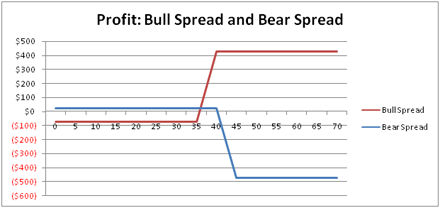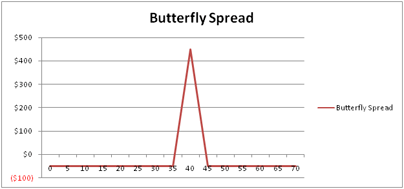Business Finance
Investment Strategies: Butterfly Spreads
Written by Gregory Steffens for Gaebler Ventures
Although an endless amount of strategies using puts and calls exists, some combinations are more widely used than others for equity investments. Many popular methods for managing the riskiness of portfolios involve the use of spreads. One particular type of spread, called a butterfly spread, profits from the lack of volatility in a stock's price during a given period of time. This article will introduce the options strategy of butterfly spreads, how they are created, and how investors profit from their design.
Butterfly spreads are a type of option strategy that involves the purchase of a call option with a lower exercise price, the purchase of a call option with a higher exercise price, and the sale of two call options with and exercise price between the other two.

Basically, this strategy combines a bull spread and a bear spread to form its design. For investors to profit from butterfly spreads, the stock price of the underlying assets needs to be relatively stable. Large movements away from the middle exercise price result in losses for the investment.
Below, the profit potentials for a bull and bear spread are graphed. The bull spread was created by purchasing a call with a $35 strike price for $250 and selling a call with a $40 strike price for $175. Although it was not covered in a previous article introducing bear spreads, they can be created using calls rather than puts.
The bear spread below consists of a long call with a $45 strike and a short call with a $40 exercise price. Notice that the bear and bull spreads have opposite payoff potential. The bear spread is essentially a short bull spread.

By combining the bull and bear spread, the profit potential for a butterfly spread can be shown. In the example below, an investor would purchase two call options, one with a strike of $35 and one with a strike of $40, and sell two call options with strikes of $40. The spread exists between the $35 and $45 prices. As the stock price approaches the $40 point from either end, the butterfly spread gains value. At this $40 point, the investor using this strategy would realize the maximum profit of $450.
However, because this strategy uses four different call options with different strike prices, each of the premiums have different prices. This results in potential losses for the butterfly spread if the stock price deviates far enough away from the $40 point. Moreover, two break even points exist at the $35.50 and $44.50 points.
As long as the stock price stays between these two prices, the strategy will avoid any loss. However, once the stock price moves away from this spread, the investor will be out-of-the-money $50.

Gregory Steffens is a talented writer with a strong interest in business strategy and strategic management. He is currently completing his MBA degree, with an emphasis in finance, at the University of Missouri.
Share this article
Additional Resources for Entrepreneurs





Conversation Board
Questions? Comments? Suggestions? Share your thoughts on investment strategies and butterfly spreads.